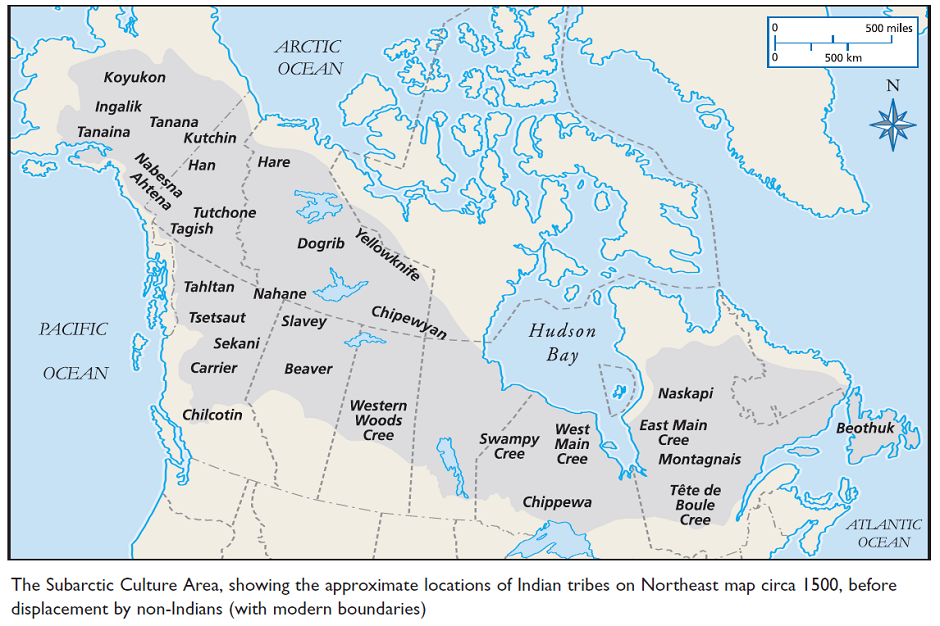
The Subarctic Culture Area has been defined by scholars as a vast territory spanning from the Pacific to the Atlantic Ocean across northern latitudes. This area encompasses much of the interior of present-day Alaska and Canada. The region is characterized by the Northern Forest, also known as taiga, which is primarily filled with evergreen trees such as pine, spruce, and fir, as well as some birch, aspen, and willow. Due to the scarcity of topsoil, the trees in this area are generally short and scraggly. The taiga is separated from the treeless tundra of the Arctic by its northern border.
The Northern Forest is crisscrossed by a network of inland waterways, including some of the largest lakes such as Great Bear Lake, Great Slave Lake, and Lake Winnipeg, as well as major rivers such as the Yukon, Mackenzie, Peace, Saskatchewan, Red River of the North, and La Grande. There are also thousands of smaller lakes and rivers, as well as numerous ponds, streams, and swamps. In the western portion of the subarctic, the taiga and swamplands give way to highlands such as the northern part of the Rocky Mountain chain, the Yukon Plateau, and the British Columbia Plateau.
The climate in the subarctic is harsh, with long and severe winters. The woodlands are blanketed with deep snow, and the lakes are covered with thick ice. Summers are short, and swamplands are breeding grounds for mosquitoes and black flies.
The subarctic is home to a diverse array of wildlife, including large mammals such as caribou, moose, musk oxen, bears, and deer, as well as smaller mammals like beavers, minks, otters, porcupines, rabbits, and squirrels. Additionally, there are numerous species of birds, particularly waterfowl, as well as fish.
Subarctic indigenous peoples were nomadic hunter-gatherers who traveled in small groups. Their dwellings were typically small cone-shaped tents covered with animal hides, with lean-tos made of brush and leaves being more common in the western region. Agriculture was not practiced by the Subarctic indigenous peoples.
Two main groups of native peoples made up the Subarctic
Culture Area: the ATHAPASCANS to the west and the
ALGONQUIANS to the east (see those entries for complete
tribal listings). The Churchill River, flowing northeastward
into Hudson Bay, divided the peoples of these two different
language families. The particular subarctic tribes of
each language family discussed in detail in this book are the
following: Among the Athapascans are the (AHTENA,
BEAVER (TSATTINE), CARRIER (DAKELH), CHIPEWYAN,
DOGRIB (THLINGCHADINNE), HARE (KAWCHOTTINE),
KUTCHIN, SLAVEY (ETCHAREOTTINE), and YELLOWKNIFE
(TATSANOTTINE). Among the Algonquians are the CREE,
MONTAGNAIS, and NASKAPI. Some of the Algonquianspeaking
CHIPPEWA (OJIBWAY) bands are considered as part
of the Subarctic Culture Area; most are classified within theNortheast Culture Area. The only people of the Subarctic
Culture Area who did not speak either Athapascan or Algonquiandialects were the BEOTHUK of Newfoundland.
They spoke a unique language called Beothukan.